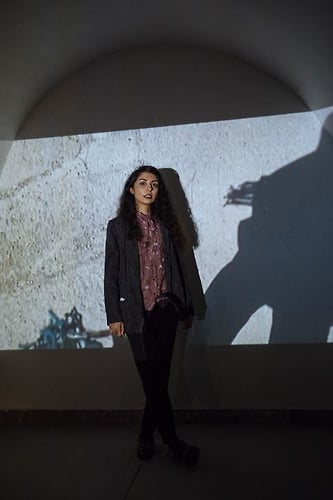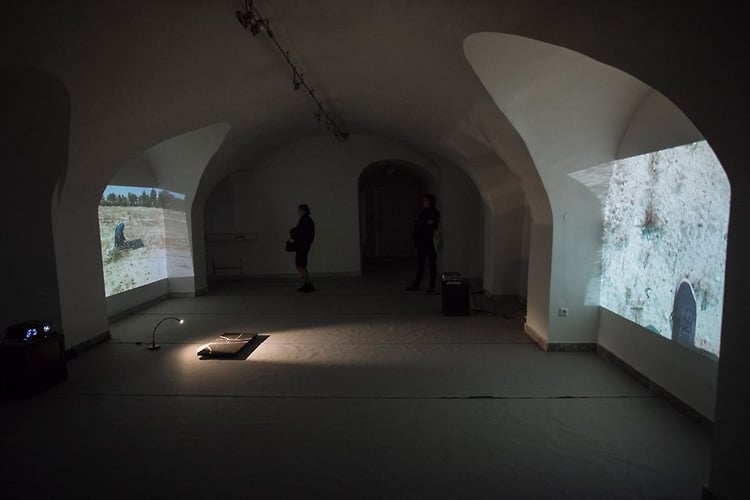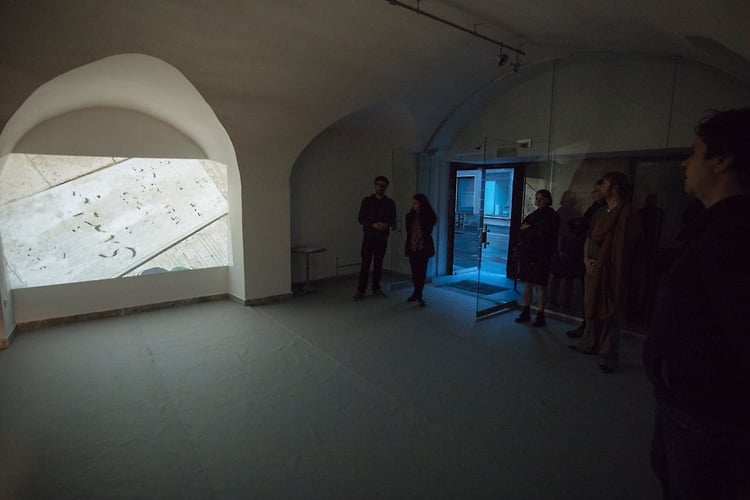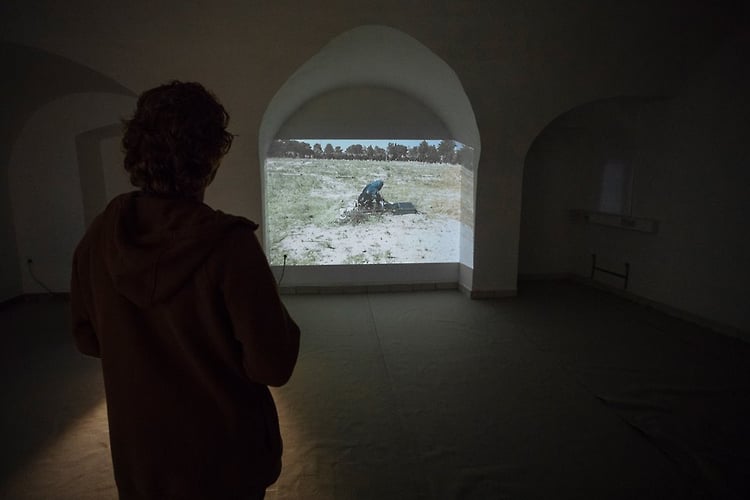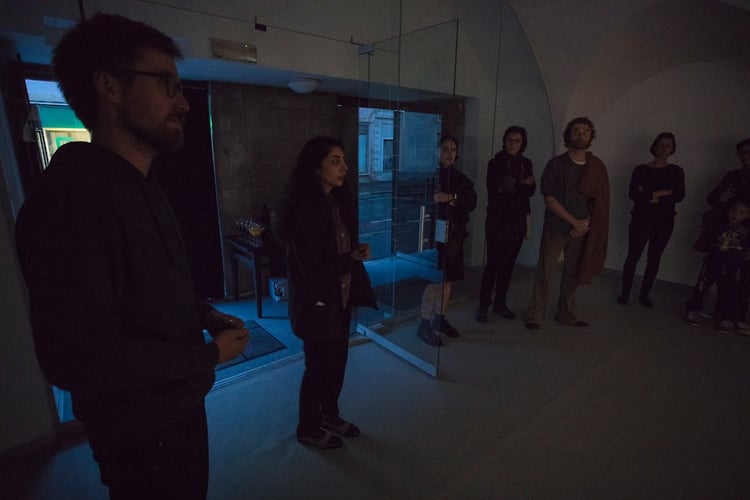ELHAM RAHMATI 2017
Elham Rahmati
It seemed the better way
Written by: Irena Borić
»Sounded like the truth
But it's not the truth today
I better hold my tongue
I better take my place
Lift this glass of blood
Try to say the grace«
Leonard Cohen, It Seemed the better Way
During the residency at GuestRoomMaribor, artist Elham Rahmati finished the work It Seemed the Better Way, the second piece of a triptych she started with Holding a Monument, 2017 both of which tackle the issues of memory and its relevance in the present moment. Holding a Monument is based on a note-book of artist's mother in which she, together with her sister, wrote questions about subjects such as the idea of political Islam, social inequality, hijab, colonialism, political independence, their role in the revolution, western ideologies, war, martyrdom, the role of universities and different institutions, etc. Her mother and aunt, as well as their friends, answered these questions back in 1979, just after the revolution. The artist used their notebook as a blueprint for making two notebooks with the same inquiries. She gave them to the people who wrote the answers in 1979, but she also answered the posed questions, as well as her friends. The work was displayed on a screen as a Word file, showing the questions and answers as they were typed. And in the case, if a written sentence has too radical content, it is covered with a thick black line of censorship. The notebook stands as a monument of revolution, as something which came about from its context as well as its young protagonists. Having this in mind, the artist is actually posing a question on what happened to these ideas and ideals today. And by getting the answers from the very same protagonists as well as new generations, it became clear that this "monument" is very fragile as understandings of political reality changed. And this mode of how political context over time shapes certain ideas and understandings is a central focus in a second piece of the triptych entitled It seemed the better way which was produced and exhibited in K18 Gallery in Maribor.
At first glance, the work It seemed the better way itself is very specific as the artist tackles fragments of her family’s history. She made two video performances in which she visits a graveyard in Iran where her uncle is buried. The unsettling element lies in the fact that her uncle died very young and his death had to do with specific political circumstances. He was a member of People’s Mujahedin of Iran which got him arrested in 1982 and later executed. His execution represents another side of the revolution as he represented a radical dissident to those who claimed the revolution. However, the ideological tensions didn't cease when he passed away, rather they continued as state agents repeatedly broke the tombstones. And the families keep on repairing and replacing them.
And, interestingly, even though these tombstones are not public monuments, they certainly have a public role within the current political climate. As it happens, when historical rupture occurs, such as war or revolution, it affects people physically and emotionally and symbols often represent ideas behind these consequences. In that sense, public monuments in one political context could be celebrating certain ideals, while in the other the very same monuments are destroyed or left to oblivion. For that reason, there is a parallel between public monuments and the public role of tombstones, especially because of ideological meaning they carry.
Elham Rahmati treats the tombstones as if she would be asking »What does that political past means today and what to do with it?«. While visiting the graveyard in Iran, she made two videos by mobile phone. The poor quality of the videos puts an emphasis on her performance rather than the video as an artefact. Her gestures are very simple. In one video she just walks around the graveyard, passing by the broken tombstones, while in the other video she sits on a broken tombstone and washes it and tries to glue it. Thus, the tombstones represent »decades of conflict between the state and its oppositions, a conflict that needs different ways of resistance if it is ever going to end.« The gesture of cleaning a monument brings into mind a performance piece Washing, Tracks, Maintenance: Outside, 1973 by Mierle Laderman Ukeles. The artist was scrubbing the exterior steps of Wadsworth Atheneum bringing to light maintenance tasks which are often completely invisible and often expected of women. However, making such a gesture as performance means bringing in a completely different set of values in a museum because she is asking Where are the female artists in the museum? In that sense, Elham Rahmati, by washing and repairing the tombstone, brings about a new set of values and transforms the invisibility of familiar scenery into material for public discussion. She raises the whole question of historical and political background lying behind these broken/repaired tombstones. In other words, her question could be – what are the fruits of the revolution?

